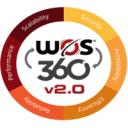 |
by staff on (#14WWE)
Today DDN announced it has been awarded additional patents for its groundbreaking WOS Object Storage software. DDN’s WOS enables organizations to deploy highly reliable, massively scalable and cost-efficient storage repositories for fast-growing data volumes. WOS technology powers Software Defined Storage initiatives in data intensive organizations providing simple to manage solutions for Open Source projects as well as Private Cloud and Active Archive deployments.The post DDN Announces New Patents in Object Storage appeared first on insideHPC.
|
 Inside HPC & AI News | High-Performance Computing & Artificial Intelligence
Inside HPC & AI News | High-Performance Computing & Artificial Intelligence
| Link | https://insidehpc.com/ |
| Feed | http://insidehpc.com/feed/ |
| Updated | 2025-12-15 08:45 |
 |
by Rich Brueckner on (#14WTN)
The Integrative Model for Parallelism at TACC is a new development in parallel programming. It allows for high level expression of parallel algorithms, giving efficient execution in multiple parallelism modes. We caught up with its creator, Victor Eijkhout, to learn more. "If you realize that both task dependencies and messages are really the dependency arcs in a dataflow formulation, you now have an intermediate representation, automatically derived, that can be interpreted in multiple parallelism modes."The post Interview: Victor Eijkhout on an Integrative Model for Parallelism appeared first on insideHPC.
|
 |
by staff on (#14WSG)
Today ThinkParQ announced that the complete BeeGFS parallel file system is now available as open source. Developed specifically for performance-critical environments, the BeeGFS parallel file system was developed with a strong focus on easy installation and high flexibility, including converged setups where storage servers are also used for compute jobs. By increasing the number of servers and disks in the system, performance and capacity of the file system can simply be scaled out to the desired level, seamlessly from small clusters up to enterprise-class systems with thousands of nodes.The post BeeGFS Parallel File System Goes Open Source appeared first on insideHPC.
|
 |
by staff on (#14SNN)
The US Department of Commerce has released details of the President’s budget request for the National Institute of Standards and Technology (NIST) in 2017 – proposing to increase spending on HPC and future computing technologies by more than 50 per cent. The total discretionary request for NIST is $1 billion, a $50.5 million increase in the enacted amount from 2016. The funding supports NIST’s research in areas such as computing, advanced communications and manufacturing.The post Obama Proposes to Increase NIST Budget appeared first on insideHPC.
|
 |
by Rich Brueckner on (#14SAZ)
"EUROSERVER is an ambitious and holistic project aimed to arm Europe with leading technology for conquering the new markets of cloud computing. Data-centers form the central brains and store for the Information Society and are a key resource for innovation and leadership. The key challenge has recently moved from just delivering the required performance, to include consuming reduced energy and lowering cost of ownership. Together, these create an inflection point that provides a big opportunity for Europe, which holds a leading position in energy efficient computing and market prominent positions in embedded systems."The post Video: Introduction to the Euroserver for Green Computing appeared first on insideHPC.
|
 |
by Rich Brueckner on (#14S7D)
Today Florida Atlantic University (FAU) announced that it is using Bright Cluster Manager software for its HPC cluster. The 56-node cluster is used for teaching Hadoop Map Reduce, bioinformatics research and other modeling and visualization work. Administrators say Bright Cluster Manager has significantly increased automation and is easily scalable to meet expected future growth.The post Florida Atlantic University Selects Bright Cluster Manager for HPC appeared first on insideHPC.
|
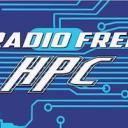 |
by Rich Brueckner on (#14S4H)
In this podcast, the Radio Free HPC team looks at Apple's fight against a court order to decrypt an iPhone used by one of the San Bernardino shooters. "The Radio Free HPC is split as to what should happen next, but it seems likely that some kind of compromise will result. Is the government entitled to a back door to all devices? It would seem that no one wants such an important policy to be decided from a single case in California."The post Radio Free HPC Looks at the Case of the Encrypted iPhone appeared first on insideHPC.
|
 |
by staff on (#14RXT)
Today, the Fortissimo 2 consortium of 38 partners has announced the launch of its first Open Call for Proposals. The project is funding a set of experiments (sub-projects) to extend and demonstrate the business potential of an ecosystem for HPC-Cloud services, specifically for applications involving the simulation of coupled physical processes or high-performance data analytics. Additional application experiments are sought to complement and to extend current project activities; these new experiments must be driven by the business needs of engineering and manufacturing SMEs and mid-caps.The post FORTISSIMO 2 Call for Proposals: HPC-Cloud-based Application Experiments appeared first on insideHPC.
|
 |
by staff on (#14NZJ)
There is still significant influence between HPC and hyperscale, in both directions, most notably in the areas of cognitive computing and artificial intelligence, where research at some of the top hyperscale companies leads the field. Standards like Open Compute Project, OpenStack, and Beiji/Scorpio also can drive acquisition decisions at traditional HPC-using organizations. Big data and analytics also transcend both HPC and hyperscale, driving I/O scalability in both markets. These trends are all included in the new hyperscale advisory service from Intersect360 Research.The post Intersect360 Research to Discuss Hyperscale Trends at Stanford HPC Conference appeared first on insideHPC.
|
 |
by staff on (#14NWR)
Over at Science Node, Lance Farrell writes that researchers are using XSEDE supercomputer resources to solve the mysteries of the Old Faithful geyser. “If you look at the distribution of supervolcanoes globally, you'll find something very interesting. You will see that most if not all of them are sitting close to a subduction zone,†Liu observes. “This close vicinity made me wonder if there were any internal relations between them, and I thought it was necessary and intriguing to further investigate this.â€The post Supercomputing the Mystery of Old Faithful appeared first on insideHPC.
|
 |
by Rich Brueckner on (#14K9A)
The Surveillance and Reconnaissance Group of Leidos is seeking a talented Principal HPC Enterprise Architect in our Job of the Week. "Successful Candidate will serves as the lead HPC technologist and subject matter expert (SME) for the HPCMP at the Army Research Lab (ARL) DoD Supercomputing Resource Center (DSRC) in Aberdeen MD."The post Job of the Week: Principal HPC Enterprise Architect at Leidos appeared first on insideHPC.
|
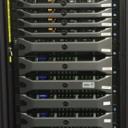 |
by Rich Brueckner on (#14K9C)
Researchers are using the new Pople HPC cluster to study gravitational waves at the University of Western Australia. "Pople places the Faculty of Science in a unique position for supporting advanced research across all areas of research in the Faculty†said Dr Amir Karton. “For example, it will be used for conducting multi-scale simulations of biochemical processes, studying gravitational waves, and simulating combustion processes which generate compounds important for seed germination. Such research could have been previously carried out only on national supercomputers, now these capabilities are accessible to any researcher in the Faculty.â€The post Pople HPC Cluster to Power Research at University of Western Australia appeared first on insideHPC.
|
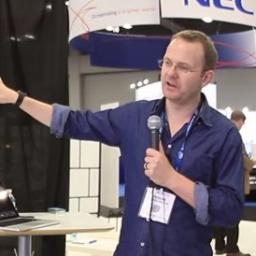 |
by Rich Brueckner on (#14GCA)
In this video from the HPC in the Cloud Educational Series, Brendan Bouffler, part of Global Scientific Computing at Amazon Web Services discusses how leveraging the SPOT market options with the Amazon cloud offering can offer advantages for scientific, large computation and big data.The post Video: Scientific Computing in the Amazon SPOT Market appeared first on insideHPC.
|
 |
by Rich Brueckner on (#14G6H)
A computer science researcher from the University of the Strathclyde in Scotland, UK, has gained recognition for his PhD research into artificial intelligence. "My research looks into ways to enable computers to figure out something on their own, whatever’s been programmed into them. For example, in computer games, AI could be used for the computer to work out why its performance has gone up or down and apply this to its strategies so that it can solve a problem without having faced that type of problem before."The post Researcher Awarded Robertson Medal for Work on Artificial Intelligence appeared first on insideHPC.
|
 |
by Rich Brueckner on (#14G4B)
In this video, researchers describe highlights from the 2016 HiPEAC conference in Prague.The post Video: Highlights from the 2016 HiPEAC Conference appeared first on insideHPC.
|
 |
by Rich Brueckner on (#14FZZ)
Today the AweSim program at the Ohio Supercomputer Center announced it has been selected to develop one of 10 national industry projects under the DOE High Performance Computing for Manufacturing (HPC4Mfg) program. We are pleased to be working with AweSim to develop a cloud-based 3D platform for our E-Weld Predictor tool,†said Tom McGaughy, EWI Director of Technology. “This new app will increase the accuracy of weld distortion and residual stress predictions and broaden access for manufacturers to use this advanced simulation tool to reduce rework and improve first-time quality.â€The post AweSim Project at OSC to Advance Welding Simulation with HPC4Mfg appeared first on insideHPC.
|
 |
by Rich Brueckner on (#14FW6)
In this podcast from Radio New Zealand, John Gustafson from the A*STAR Agency for Science, Technology and Research discusses parallelism and high performance computing. Gustafson is the father of Gustafson’s Law, which gives the theoretical speedup in latency of the execution of a task at fixed execution time that can be expected of a system whose resources are improved.The post Podcast: John Gustafson on What’s Next for Parallel Computing appeared first on insideHPC.
|
 |
by Rich Brueckner on (#14CMD)
Today GE Global Research announced that it has been awarded two projects under the U.S. Department of Energy’s (DOE) High Performance Computing for Manufacturing (HPC4Mfg) Program. Teams of Global Research experts will work with teams at Oak Ridge and Lawrence Livermore National Labs on some of the world’s most powerful supercomputers to improve 3D printing processes and explore new concepts for higher jet engine efficiency.The post GE & DOE Partner on HPC4Mfg Projects appeared first on insideHPC.
|
 |
by Rich Brueckner on (#14CMF)
Applications are now being accepted for the Student Volunteers Program at the SC16 conference. As the premier international conference for high performance computing, networking, data storage and analysis, SC16 takes place Nov. 13-18 in Salt Lake City.The post SC16 Student Volunteers Program now Accepting Applications appeared first on insideHPC.
|
 |
by staff on (#14CJA)
Registration is now open for the Advanced Hands-On OpenCL Tutorial at the IWOCL 2016 conferernce. The tutorial focuses on advanced OpenCL concepts and is an extension of the highly successful "Hands on OpenCL" course which has received over 6,500 downloads from GitHub. Simon McIntosh-Smith, Associate Professor in High Performance Computing at the University of Bristol and one of the tutorial authors will lead the sessions.The post Advanced Hands-On OpenCL Tutorial To Kick-Off IWOCL 2016 appeared first on insideHPC.
|
 |
by Rich Brueckner on (#14C9Q)
In this HPC Podcast, Don Kinhorn and Chris Stevens from Puget Systems discuss the boom in FPGAs at SC15 as well as Intel’s announcement that the company is going to maintain a build of Python. "Python is a pretty important programming language. It has a large and growing number of useful libraries for mathematical/scientific computing and machine learning, NumPy, SciPy, pandas, Scikit-learn, PySpark, theano, and more."The post HPC Podcast Looks at Intel’s Pending Distribution of Python appeared first on insideHPC.
|
 |
by staff on (#14C46)
In this special guest feature from Scientific Computing World, Andrew Jones from NAG looks ahead at what 2016 has in store for HPC and finds people, not technology, to be the most important issue. "A disconcertingly large proportion of the software used in computational science and engineering today was written for friendlier and less complex technology. An explosion of attention is needed to drag software into a state where it can effectively deliver science using future HPC platforms."The post Changes Afoot from the HPC Crystal Ball appeared first on insideHPC.
|
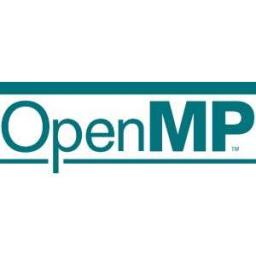 |
by MichaelS on (#14C0V)
"In a heterogeneous system that combines both the Intel Xeon CPU and the Intel Xeon Phi coprocessor, there are various options available to optimize applications. Whether one has an advantage over another is somewhat dependent on the application that is being run. Comparisons can be made comparing the two methods, as long as the algorithm lends itself to run and take advantage of either OpenMP or OpenCL."The post OpenMP and OpenCL on Intel Xeon Phi appeared first on insideHPC.
|
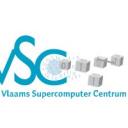 |
by Rich Brueckner on (#148Q0)
Today Mellanox announced that the Flemish Supercomputer Center (VSC) in Belgium, has selected Mellanox’s end-to-end 100Gb/s EDR interconnect solutions to be integrated into a new LX-series supercomputer that is to be supplied by NEC Corporation. The system, which will be the fastest supercomputer (Tier-1) and the first complete end-to-end EDR 100Gb/s InfiniBand system in Belgium, is another example of the increasing global adoption of EDR InfiniBand technology.The post VSC in Belgium Moves to EDR InfiniBand for Medical Research appeared first on insideHPC.
|
 |
by Rich Brueckner on (#148KC)
Today U.S. Department of Energy’s announced 10 new High Performance Computing for Manufacturing (HPC4Mfg) projects. Under the HPC4Mfg program, National laboratory experts in advanced modeling, simulation and data analysis collaborate with industrial partners on project teams to address manufacturing challenges that will aid in decision making, optimize processes and design, improve quality, predict performance and failure, quicken or eliminate testing, and/or shorten the time of adoption of new technologies.
|
 |
by staff on (#148AR)
Today Sony Corporation announced that it has reached an agreement with Altair Semiconductor to acquire the company. The purchase price is $212 million U.S. dollars (approximately 25 billion yen), and Sony expects to complete the acquisition in early February, 2016.The post Sony Acquires Altair Semiconductor appeared first on insideHPC.
|
 |
by Rich Brueckner on (#1488M)
Today the ISC 2016 conference announced that their Tuesday keynote session will highlight contributions from female researchers and scientists in advancing the field of computational science. "This year, Dr. Jacqueline H. Chen, a distinguished member of technical staff at Sandia National Laboratories, has been invited to keynote on Tuesday, June 21, on the topic of advancing the science of turbulent combustion using petascale and exascale simulations."The post ISC 2016 Keynote to Showcase Women’s Excellence in Computational Science appeared first on insideHPC.
|
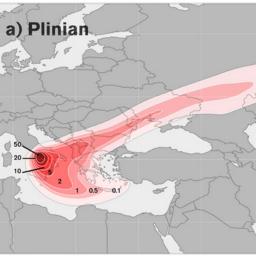 |
by Rich Brueckner on (#1486W)
Researchers at BSC are using the MareNostrum supercomputer to study super eruptions--volcanic events with most destructive force on this planet. Only a few super volcanos exist in the world and when they erupt, they do so with a force tens of thousands of times greater than other eruptions. "A new study on the Campanian Ignimbrite super-eruption, which took place some 39,000 years ago near the modern city of Naples, provides a detailed reconstruction of this natural phenomenon which slowed the advance of Modern Humans in Europe."The post Supercomputing Super Eruptions at BSC appeared first on insideHPC.
|
 |
by Rich Brueckner on (#1451Z)
Today Nexsan announced the next-generation Nexsan BEAST storage array. Engineered to deliver superior reliability, availability and energy efficiency along with storage density, the BEAST enables 60 drives, or 480TB, in a standard 4U rack, expandable up to 4.8PB in a 42U rack.The post Nexsan BEAST Storage Array Delivers 4.8 PB in a 42U Rack appeared first on insideHPC.
|
 |
by Rich Brueckner on (#144QY)
Still unobserved, Planet 9 is within the gravitational influence of our sun, completing one revolution in approximately 20,000 years. That means its orbital clock runs so slowly that it has not been around the sun since our last ice age. "The work could not have been completed without the heavy lifting provide by supercomputers at California Institute of Technology (Caltech). There, Batygin employed the Fram supercomputer at CITerra for four months to simulate four billion years of solar system evolution. Fram consists of almost 4,000 cores, running on the NSF-funded Rocks software environment, with 512TB of Lustre file storage."The post Supercomputing and the Search for Planet 9 appeared first on insideHPC.
|
 |
by Rich Brueckner on (#144PE)
"The findings of a recent IDC study on the cybersecurity practices of U.S. businesses reveal a wide spectrum of attitudes and approaches to the growing challenge of keeping corporate data safe. While the minority of cybersecurity "best practitioners" set an admirable example, the study findings indicate that most U.S. companies today are underprepared to deal effectively with potential security breaches from outside or inside their firewalls."The post Cyber Security: IDC Study Shows Wide Range of Corporate Preparedness appeared first on insideHPC.
|
 |
by Rich Brueckner on (#144K0)
Registration is now open for PRACEdays16. As one of Europe’s most important conferences on HPC in science and industry, PRACEdays16 will be held from May 10-12 in Prague, Czech Republic.The post Registration Opens for PRACEdays16 in Prague appeared first on insideHPC.
|
 |
by staff on (#144EY)
Today Bright Computing announced that Bill Wagner has been appointed as its Chief Executive Officer, effective immediately. As Bright Computing’s CEO, Bill succeeds Matthijs van Leeuwen, who founded the company and served as its CEO since 2009.The post Bright Computing Names Bill Wagner as CEO appeared first on insideHPC.
|
 |
by veronicahpc1 on (#144F0)
"Intel has incorporated Intel Solutions for Lustre Software as part of the Intel SSF because it provides the performance to move data and minimize storage bottlenecks. Lustre is also open source based, and already enjoys a wide foundation of deployments in research around the world, while gaining significant traction in enterprise HPC. Intel’s version of Lustre delivers a high-performance storage solution in the Intel SSF that next-generation HPC needs to move toward the era of Exascale."The post High-Performance Lustre* Storage Solution Helps Enable the Intel® Scalable System Framework appeared first on insideHPC.
|
 |
by Rich Brueckner on (#141C8)
The HPC Advisory Council has posted the speaker agenda for the HPCAC Swiss Conference. The event takes place March 21-23 in Lugano, Switzerland. The conference will focus on High-Performance Computing essentials, new developments and emerging technologies, best practices and hands-on training.The post Agenda Posted: HPCAC Swiss Conference in Lugano, March 21-23 appeared first on insideHPC.
|
 |
by Rich Brueckner on (#14190)
"As a result of a new alliance with Intel, HP is offering its HPC Solutions Framework based on HP Apollo servers, which are specialized for HPC and now optimized to support industry- specific software applications from leading independent software vendors. These solutions will dramatically simplify the deployment of HPC for customers in industries such as oil and gas, life sciences and financial services. The HP Apollo product line integrates Intel’s technology innovation from its HPC scalable system framework, which helps to extend the resilience, reliability, power efficiency and price/performance of the HP Apollo solutions."The post Video: HPE Solutions for Data-Driven Organizations appeared first on insideHPC.
|
 |
by Rich Brueckner on (#13YCN)
Over at the Dell HPC Blog, Olumide Olusanya and Munira Hussain have posted an interesting comparison of FDR and EDR InfiniBand. "In the first post, we shared OSU Micro-Benchmarks (latency and bandwidth) and HPL performance between FDR and EDR Infiniband. In this part, we will further compare performance using additional real-world applications such as ANSYS Fluent, WRF, and NAS Parallel Benchmarks. In both blogs, we have shown several micro-benchmark and real-world application results to compare FDR with EDR Infiniband."The post Comparing FDR and EDR InfiniBand appeared first on insideHPC.
|
 |
by Rich Brueckner on (#13YBF)
In this video from the 2015 RubyConf event in Columbia, Ray Hightower presents: Parallella Supercomputing. "Parallella is a single-board supercomputer smaller than a deck of cards. While today’s fastest laptops contain four processor cores, Parallella has eighteen (2 ARM cores plus an Epiphany chip with 16 RISC cores). The maker of Parallella, Adapteva, is on a mission to democratize parallel computing. The company’s tag line is Supercomputing for Everyone."The post Video: Parallella Supercomputing appeared first on insideHPC.
|
 |
by Rich Brueckner on (#13VSF)
Dona Crawford, Associate Director for Computation at NNSA’s Lawrence Livermore National Laboratory (LLNL), announced her retirement last week after 15 years of leading Livermore’s Computation Directorate. "Dona has successfully led a multidisciplinary 1000-person team that develops and deploys world-class supercomputers, computational science, and information technology expertise that enable the Laboratory’s national security programs,†LLNL Director Bill Goldstein said. “Dona’s leadership in high performance computing has been instrumental in bringing a series of world-class machines to the Laboratory.â€The post Dona Crawford Retires from LLNL appeared first on insideHPC.
|
 |
by Rich Brueckner on (#13V4V)
square-300The NYU Langone Medical Center is seeking an HPC Director in our Job of the Week. "The Director, High Performance Computing (HPC), under the supervision of the Senior Director, Research IT, and in close collaboration with the Associate Dean, Collaborative Science, and the Director, Institute for Computational Biology, provides support for computer-intensive scientific work at NYU Langone Medical Center (NYULMC). The Director will work intensively with scientific end users and liaise with other NYU Medical Center IT (MCIT) information, technical, and engineering staff to satisfy requirements."The post Job of the Week: HPC Director at NYU Langone Medical Center appeared first on insideHPC.
|
 |
by staff on (#13S06)
Today Cray announced financial results for the year and fourth quarter ended December 31, 2015. The company reported total 2015 revenue of $724.7 million, which compares with $561.6 million for 2014.The post Cray Hits Record $724 Million Revenue for 2015 appeared first on insideHPC.
|
 |
by Rich Brueckner on (#13RME)
In this video from SC15, NERSC shares its experience on optimizing applications to run on the new Intel Xeon Phi processors (code name Knights Landing) that will empower the Cori supercomputer by the summer of 2016. "A key goal of the Cori Phase 1 system is to support the increasingly data-intensive computing needs of NERSC users. Toward this end, Phase 1 of Cori will feature more than 1,400 Intel Haswell compute nodes, each with 128 gigabytes of memory per node. The system will provide about the same sustained application performance as NERSC’s Hopper system, which will be retired later this year. The Cori interconnect will have a dragonfly topology based on the Aries interconnect, identical to NERSC’s Edison system."The post Video: Optimizing Applications for the CORI Supercomputer at NERSC appeared first on insideHPC.
|
 |
by Rich Brueckner on (#13RHD)
Today the European PRACE infrastructure announced the PRACE CodeVault, an open repository containing various high performance computing code samples for the HPC community. The CodeVault is an open platform that supports self-education of learning HPC programming skills where HPC users can share example code snippets, proof-of-concept codes and more.The post Share Your HPC Code in the PRACE CodeVault appeared first on insideHPC.
|
 |
by Rich Brueckner on (#13REB)
Today NICE software in Italy announced that the company is to be acquired by Amazon Web Services, the world’s most comprehensive and broadly adopted cloud platform. With its remote visualization platform, NICE delivers comprehensive Grid & Cloud Solutions for increasing user productivity to access applications and computing resources.The post AWS to Aquire Italy’s NICE Software appeared first on insideHPC.
|
 |
by Rich Brueckner on (#13NJ2)
The first annual International Workshop on Performance Portable Programming Models for Accelerators has issued its Call for Papers. Known as P^3MA, the workshop will provide a forum for bringing together researchers, vendors, users and developers to brainstorm aspects of heterogeneous computing and its various tools and techniques.The post Call for Papers: International Workshop on Performance-Portable Programming Models for Accelerators appeared first on insideHPC.
|
 |
by john kirkley on (#13MZ1)
“We expect NCSI to run for the next two decades. It’s a bit audacious to start a 20 year project in the last 18 months of an administration, but one of the things that gives us momentum is that we are not starting from a clean sheet of paper. There are many government agencies already involved and what we’re really doing is increasing their coordination and collaboration. Also we will be working very hard over the next 18 months to build momentum and establish new working relationships with academia and industry.â€The post Creating an Exascale Ecosystem Under the NSCI Banner appeared first on insideHPC.
|
 |
by Rich Brueckner on (#13MXA)
"A new supercomputer, dubbed Cheyenne, is expected to be operational at the beginning of 2017. The new high-performance computer will be a 5.34-petaflop system, meaning it can carry out 5.34 quadrillion calculations per second. It will be capable of more than 2.5 times the amount of scientific computing performed by Yellowstone."The post UW Projects Awarded 42 Million Core Hours on Yellowstone Supercomputer appeared first on insideHPC.
|
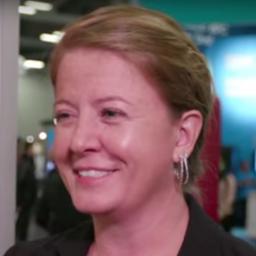 |
by Rich Brueckner on (#13MV5)
In this Graybeards Podcast, Molly Rector from DDN describes how HPC storage technologies are mainstreaming into the enterprise space. "In HPC there are 1000s of compute cores that are crunching on PB of data. For Oil&Gas companies, it’s seismic and wellhead analysis; with bio-informatics it’s genomic/proteomic analysis; and with financial services, it’s economic modeling/backtesting trading strategies. For today’s enterprises such as retailers, it’s customer activity analytics; for manufacturers, it’s machine sensor/log analysis; and for banks/financial institutions, it’s credit/financial viability assessments. Enterprise IT might not have 1000s of cores at their disposal just yet, but it’s not far off. Molly thinks one way to help enterprise IT is to provide a SuperComputer as a service (ScaaS?) offering, where top 10 supercomputers can be rented out by the hour, sort of like a supercomputing compute/data cloud."The post Podcast: Molly Rector from DDN on the Changing Face of HPC Storage appeared first on insideHPC.
|
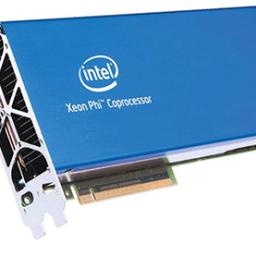 |
by MichaelS on (#13MQ2)
"The combination of using both MPI and OpenMP is a topic that has been explored by many developers in order to determine the most optimum solution. Whether to use OpenMP for outer loops and MPI within, or by creating separate MPI processes and using OpenMP within can lead to various levels of performance. In most cases of determining which method will yield the best results will involve a deep understanding of the application, and not just rearranging directives."The post MultiLevel Parallelism with Intel Xeon Phi appeared first on insideHPC.
|
 |
by staff on (#13HYQ)
Today the Ohio Supercomputer Center (OSC) announced plans to boost scientific and industrial discovery and innovation with a powerful new supercomputer from Dell. To be deployed later this year, the new system is part of a $9.7 million investment that received approval from the State Controlling Board in January.The post OSC to Deploy New Dell Supercomputer in Ohio appeared first on insideHPC.
|